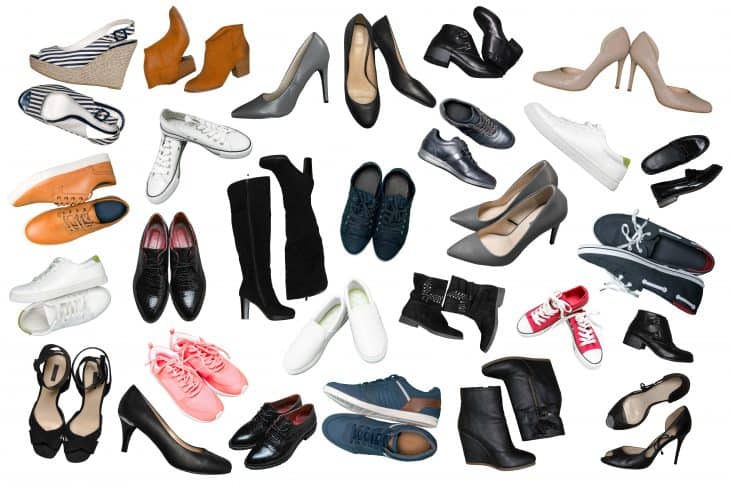
Planning an outfit can be stressful, especially when you don’t know all of your choices. People can often overlook this, but shoes can make or break an outfit. Some types of shoes add personality, but they can also distract from the bigger picture you want to show.
Some shoes can make a statement. Meanwhile, others can simply provide comfort. It’s up to you, of course, which one you want to choose. Of course, to make that choice, you’ll have to know about them. From athletic shoes to dress shoes, read on for the different types of shoes!
Basic Parts of a Shoe
Aside from colors, sizes, and material, shoes also differ in their parts. Some types of shoes will have more parts than others. Most shoes, however, have four basic parts: sole, heel, upper, and toe box.
Sole
You might be thinking that the sole is the bottom part of the shoe that comes in contact with the ground. That is correct, but it isn’t the complete picture. Usually, shoes have an insole, a midsole, and an outsole. The insole refers to the interior bottom of the shoe. The outsole comes in contact with the ground. Meanwhile, the midsole lies in between these two layers to add shock absorption.
Heel
Attached to the outsole is the heel. Heels don’t just come in different lengths. They come in different shapes too. For instance, the shape of the heels of athletic shoes is far different from the shape of the heels of dress shoes. Heels provide support and other functional purposes.
Upper
The upper secures the shoe on your foot. Plus, it offers protection by covering your foot and sometimes your ankles and calves as well. However, the upper can also just be the straps of your sandals. Vamp is a part of the upper that covers the forepart of your foot.
Toe box
A closed-toe shoe has a toe box. This is the part of the shoe that surrounds the toe, and it can come in different shapes and sizes. Wearing shoes with an ill-fitting toe box can cause injuries. Thus, it is important to find the right style and size for you. Thankfully, there are several types of shoes that you can choose from for all kinds of occasions, too!
Types of Athletic Shoes
There are so many sports in the world. Each sport has its own rules, arena, and equipment. Shoes play a huge role in sports as well. By design, athletic shoes meet the needs that sports demand from their players. Thus, you’ll notice athletic shoes usually serve function over fashion. However, that doesn’t mean these types of shoes can’t be stylish either!
1. Ballet Shoes
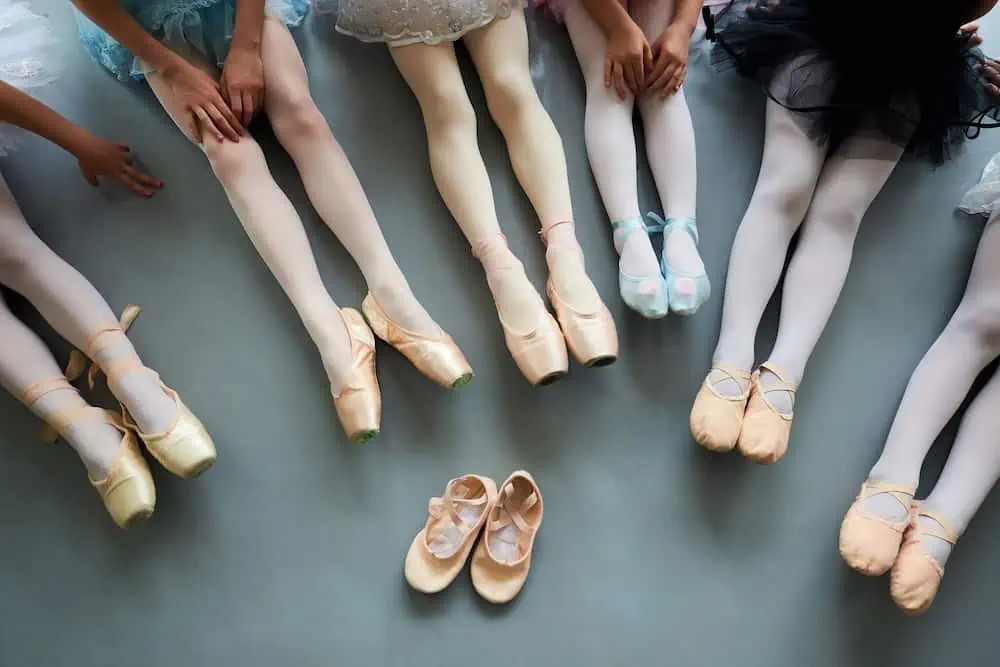
Ballet is a type of dance that calls for a lot of precision and technique. To perform, ballet dancers can’t just wear whatever type of shoe is available. They have to wear ballet shoes. Some also call ballet shoes “ballet slippers.” Compared to other types of shoes, ballet shoes are very lightweight.
Designed to accommodate the intricate moves ballerinas have to do, shoemakers use canvas or satin for the shoe’s upper. The sole is also flexible and thin. Most ballet shoes are skin-colored. That way, the shoes don’t distract from the performance.
Pointe shoe is a special type of ballet shoe. Pointe shoes have a toe pad in between the foot and toe box. The toe pad provides support while the ballerina dances en pointe or on the tips of their toes.
2. Basketball Shoes
One of the more popular types of shoes is basketball sneakers. Some basketball shoes have simple designs, while some are quite flashy. They make for popular casual wear choices too.
However, since the basketball court can get intense, shoemakers designed these shoes to withstand the heat of the game. Basketball players often have to jump, skid, and run across the court. Because of this, shoemakers make the upper of these shoes bulkier. This cushions the ankle and provides stability to prevent injuries.
3. Baseball Shoes
Shoes meant for outdoor sports are a little different from most types of shoes. Baseball shoes have cleats or studs on the outsole. Baseball players often have to run across fields. Whether or not it’s raining, the mud can get slippery. The cleats provide traction so that players are less likely to slide across the field.
For this type of shoe, the cleats are rectangular. Usually, shoemakers use rubber or plastic for the cleats. They also use metal. However, only high school players or older can use those with metal spikes.
Among baseball players, they simply call their shoes “cleats” or “spikes.”
4. Bowling Shoes
To go bowling, you can’t just wear any type of shoes. You have to wear the proper bowling shoes. Thankfully, most bowling alleys have got you covered. At the entrance, you’ll notice something right away: shoe rentals.
While bowling shoes look similar to other types of shoes, they are still unique. Bowling shoes have rubber outsoles. Like cleats, the rubber outsoles provide traction for the bowler’s footwork. It helps them slide with ease on the lane. A rubber heel also helps secure the player while braking.
5. Climbing Shoes
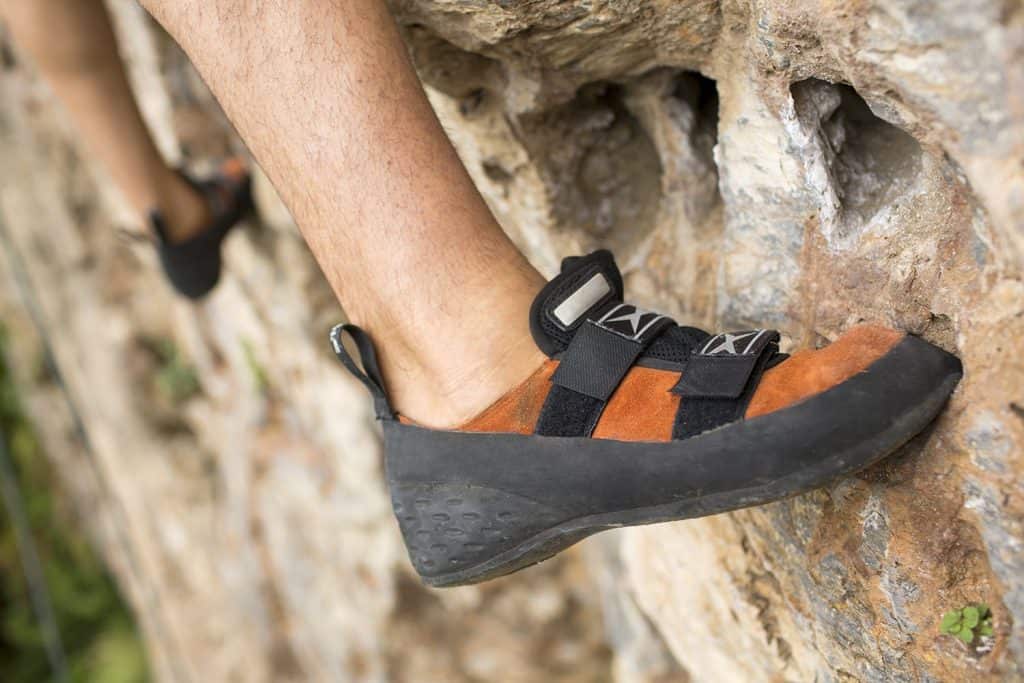
Another type of athletic shoe is climbing shoes. Climbing shoes are close-fitting with rubber soles. They usually don’t have any padding. This makes it easier for the climber to make small steps as they climb. To secure the shoe to the foot, most climbing shoes have laces or straps.
Climbing shoes also have three types: neutral, moderate, and aggressive. Neutral shoes are great for easy climbs, so beginners often wear these. Moderate shoes have a slightly down-turned shape, which makes them great for intermediate climbs. Lastly, aggressive shoes have the most down-turned shape. This gives the climber more control over their toes to achieve challenging climbs.
They aren’t the most comfortable pair of shoes, so climbers usually only wear them right before they start their climb. This makes sense, as these shoes aren’t suited for walking or trekking.
6. Football Boots
Similar to baseball shoes, football boots also have spikes. You might confuse football boots with soccer shoes, but these two are different. Despite looking the same, football boots have their own distinct characteristics.
In American football, players often have to run across the field at high speeds. Thus, football boots are designed to help them achieve this effectively while reducing risks for injury. Near the big toe is a toe spike. When they have to block a tackler, they can steady themselves with the extra traction that toe spikes provide.
Furthermore, football boots can come in original designs. Unlike soccer shoes, some football cleats have high-top designs like basketball shoes. Some also have mid-rise designs. These provide extra ankle support.
7. Golf Shoes
When people go golfing, they often only think about preparing their golf balls and clubs. However, as with any other sport, wearing the right type of shoes is also important. There are different types of shoes for golfing, but most have spikes. These spikes are attachable, which makes cleaning them much easier. You can also easily replace them when they turn dull.
Shoemakers use either metal or plastic to make the spikes. However, most golf courses have banned metal spikes. This is to preserve the golf course from marks.
8. Hiking Boots
Among the other types of shoes, hiking boots are one of the heaviest and stiffest. Hiking boots are usually high-cut with thick cushions to give a tight fit. This provides more ankle support. Furthermore, the upper of hiking boots is usually waterproof. This keeps the hiker’s feet protected from the rain and other elements.
These features make hiking boots ideal for backpacking, trekking, and hunting. In fact, some also use hiking boots for mountaineering by adding crampons. Crampons are attachable spikes that help climbers find mobility during climbs on icy mountains or glaciers.
9. Hockey Skates
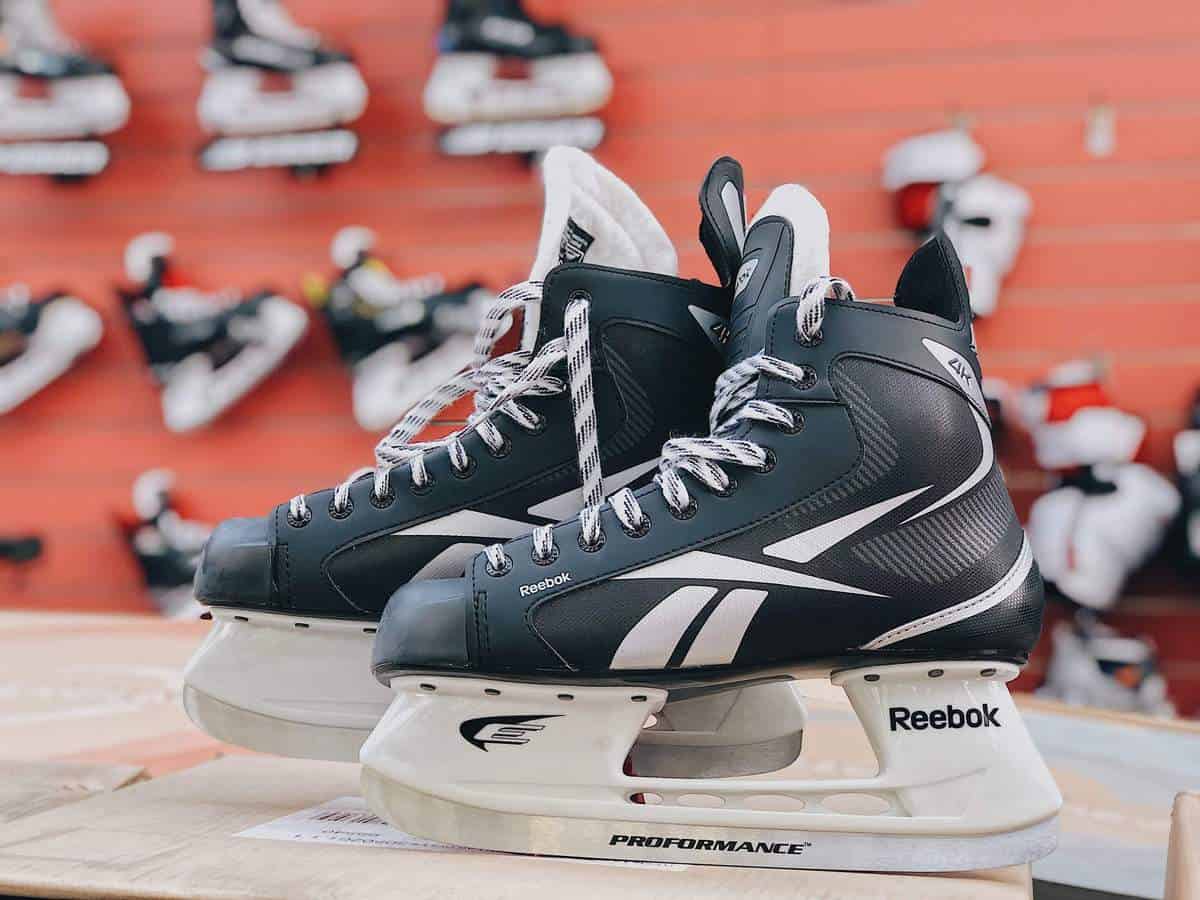
Unlike other types of shoes, you might find it difficult to balance on a pair of hockey skates. While other sports occur on the field or indoors, hockey takes place on the ice. To make it possible to speed across the ice rink, hockey skates have metal blades underneath.
Hockey skates are high-cut and lightweight with relatively short blades. Usually, the boots’ material is hard plastic or carbon fiber. This protects the player from incoming pucks or sticks.
10. Figure Skates
Figure skating calls for different techniques than ice hockey does. Thus, figure skates are also constructed differently. Shoemakers often use leather to make the boots and then attach a long metal blade underfoot. This blade is longer than a hockey skates’ blade. Plus, the blade also has a toe pick on one end and a flat long blade on the other.
The material and shape of the blade make it easier for figure skaters to glide across the ice rink and perform twists and turns. Designs for figure skates also differ drastically from hockey skates. Usually, figure skates come in skin-toned shades or clean whites.
11. Soccer Shoes
Soccer, yet another popular team sport, has its own type of shoes as well. This outdoor game takes place on a grassy soccer field. Thus, soccer shoes also have cleats or spikes.
Just as football boots have their own characteristics, soccer cleats are also unique. All soccer cleats are lightweight, which offers better agility to players. On the other hand, some football boots are heavier for certain positions that need more support.
12. Tennis Shoes
These shoes might look like your casual sneakers, but they are actually different from other types of shoes. Tennis is a racket sport that calls for speed and quick footwork. That’s why shoemakers use shock-absorbent fabric. Plus, tennis shoes have flat and wide non-scuffing soles to help resist wear and tear. With the right pair of tennis shoes, players can make the most of their skills.
13. Rollerskates
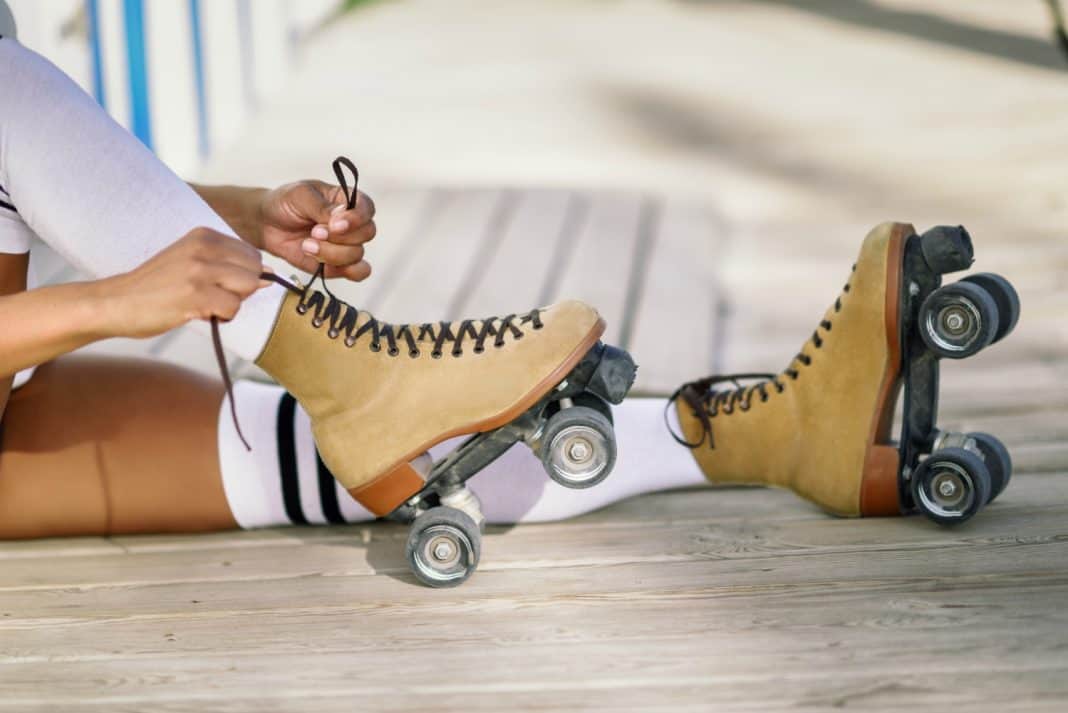
Among the other types of shoes, roller skates easily stand out. This is because these shoes have wheels on them. Most roller skates have four wheels, with one on each corner of the outsole. The placement of the wheels makes it easier for the wearer to balance and glide with the wheels.
Roller skates were incredibly popular in the 1970s during the rise in disco music. This popularity continued to rise as roller skating became a recreational activity for people of all ages. Today, roller skating is also a sport and a viable mode of transportation.
There are some variations with 3 – 4 wheels lined at the center of the outsole as well.
14. Running Shoes
Running shoes are one of the most common types of shoes out there. These versatile shoes are the go-to for those who enjoy going to the gym or jogging around the neighborhood. Some often mistake running shoes for casual types of shoes, but running shoes are still athletic shoes.
There are two types of running shoes: road running shoes and trail running shoes. As the name suggests, road running shoes are for running or jogging on roads, sidewalks, and similar terrain. Road running shoes are light and comfortable but strong enough to endure long distances. On the other hand, trail running shoes are for those who enjoy off-road running. They are still light but have thicker soles. This provides traction against wet and muddy trails.
Types of Casual Shoes
For everyday wear, the types of shoes to look for are casual shoes. Casual shoes offer different styles to choose from. They can help you add flair to your outfit, or you can always keep it simple.
15. Ballet Flats
One of the most popular types of women’s shoes is ballet flats. Inspired by ballet shoes, ballet flats are slip-on shoes with thin soles and uppers. The toe box can be boxy or round, and it usually has a slight gathering with a decorative ribbon.
You can never go wrong with having a simple pair of black ballet flats in your closet. Ballet flats also come in different colors too. They can add a pop of color to your denim jeans or white dress.
16. Canvas Shoes
You can set apart canvas shoes from other types of shoes by their material. Made from hemp, the canvas is a coarse cloth. It is a popular material for tote bags, sails, tents, and paint canvases. As the name suggests, canvas shoes are sneakers made from this material.
The shoes have a canvas upper with a rubber sole. They come in different colors with cute designs, but a plain yet stylish canvas is also popular. They are easy to pair with outfits, so they are a popular everyday pick. Plus, they are affordable too!
17. Chuck Taylor Sneakers

This type of shoe is actually a brand name. However, the design is so iconic that it stands out as its own type. From the company Converse, Chuck Taylors are high-cut shoes with a stitched upper, white rubber toe box, and brown rubber sole. It has risen in popularity since the 1920s, and it has different shoe styles today. Some come in leather. The iconic canvas version also remains a favorite.
The full name of these shoes is “Chuck Taylor All-Stars” or “Converse All-Stars.” Common names for these shoes are “Converse,” “Chuck Taylors,” and “Chucks.”
18. Flip-flops
Flip-flops are one of the types of shoes that are open-toed. Usually, the sole is flat, and straps secure the foot instead of a full upper. Most flip-flops have a Y-shaped strap, but a single, thick strap across the toes is also popular.
People usually wear flip-flops to the beach. You can easily take them off and slide them back on. However, schools and other places with dress codes usually don’t allow these types of shoes.
19. Gladiator Sandals
Similar to flip-flops, gladiator sandals are also open-toed. What sets gladiator sandals from other types of shoes are the criss-cross straps that run from the ankle to mid-calf (sometimes higher!).
This is the modern take on the footwear Roman and Greek gladiators wore before. Back then, shoemakers used animal leather to make sandals. They had to use thick, durable leather, so it could withstand the strain of fights. Today, shoemakers opt for synthetic or vegan leather. Some also use colorful cloth for the straps.
20. Mules

Unlike the previous types of shoes, mules aren’t open-toed. Instead, mules cover the toes but leave the foot’s heel exposed. Mules originate from Ancient Rome. However, they only rose in popularity during the 16th century in Europe. They were popular bedroom slippers, so they were not worn outside.
Today, mules are popular casual shoes. Like flip-flops, you can easily slip them on. However, they offer more protection since they cover your toes. Plus, they are technically close-toed, so you can wear them under strict dress codes.
Types of Dress Shoes
If you’re looking for some fancy shoes, then these dress shoes might interest you! Dress shoes are a must for formal events. Although, most of them are comfortable enough for everyday wear. Either way, below are great choices for dress shoes for women and men.
21. Blucher
One of the popular types of shoes for men is the blucher. These dress shoes have open lacing. They look similar to derbies. In fact, people in the U.S. interchangeably use these terms. However, they still differ.
Notably, the blucher has smaller eyelets for shoelaces. The vamp is one cut, which refers to being made from a single piece of leather.
22. Boat Shoes
Another name for boat shoes is “deck shoes.” This type of shoe started off as footwear for sailors. To prevent sailors from slipping on the wet deck, shoemakers cut a siping pattern on its outsoles. A siping pattern is the same one car tires have that provides traction against the wet pavement. Plus, the material for the upper is usually leather to repel water.
Given its history, you might understand why people don’t wear socks with boat shoes. Aside from looking fashionable, that is.
23. Brogues
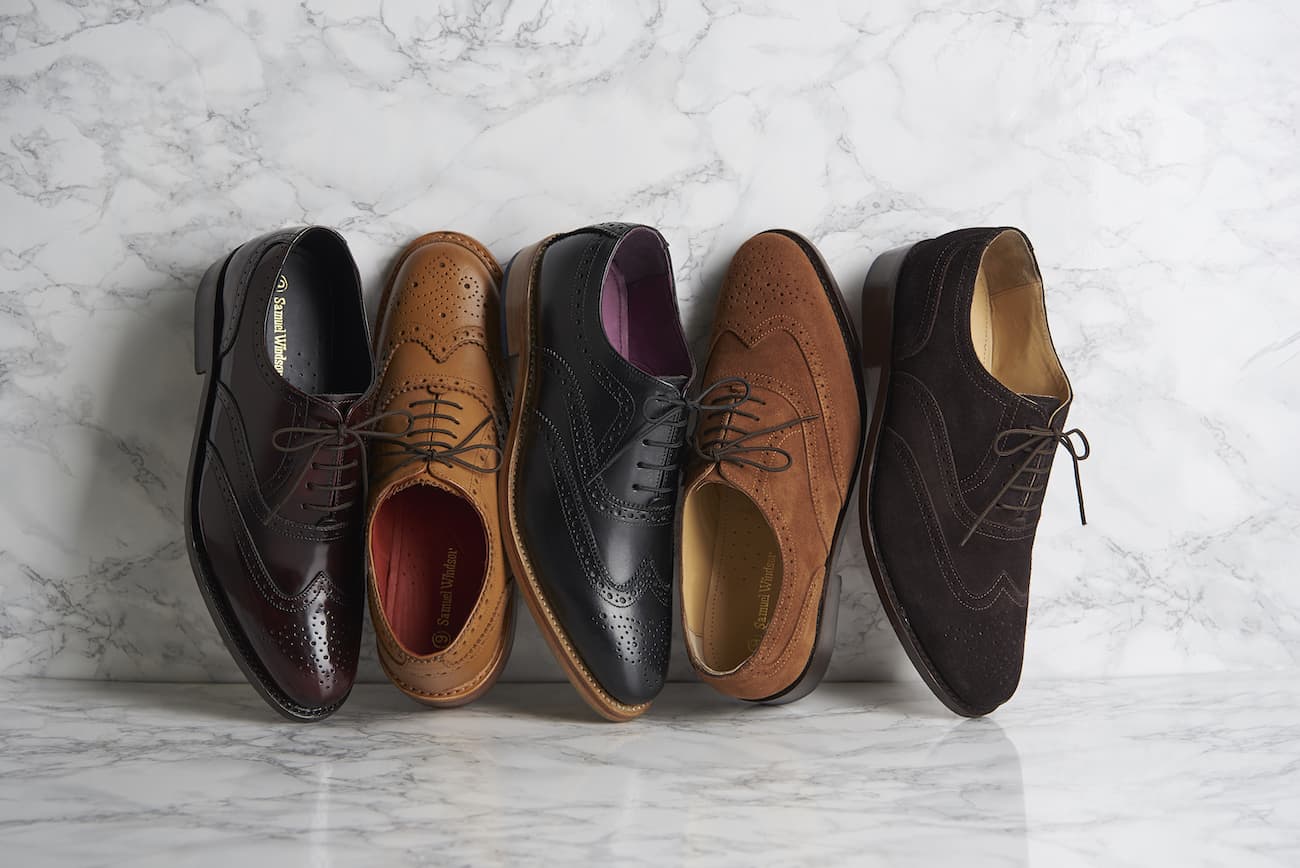
Brogues are part of the same family as oxfords, bluchers, and loafers. They are leather, low-heeled dress shoes. Unlike a blucher, a brogue’s upper has multiple pieces. Shoemakers cut hard leather into pieces and then sew them back together. They also add what they call “broguing,” or small decorative holes. These give brogues a stylish vibe.
These versatile shoes are great for almost any occasion or event. Both men and women wear them with casual outfits as well!
24. Chukka
A chukka is like a derby but as an ankle boot. The upper is usually suede. There are also leather variations. It has an open lacing with 2 – 3 pairs of eyelets that secure the upper parts together. Some styles of the chukka include heeled versions. For those who want to add height, chukkas with wedge soles are available.
Other names for chukkas include “chukka boots” or “desert boots.”
25. Derby
Like bluchers, derbies have an open lacing system. They look similar to oxfords, but they are more casual. In fact, derbies started off as hunting shoes. They provide a lot of mobility despite the leather upper. This is because the upper comprises cut pieces of leather instead of just one cut.
If you’re looking for a comfortable dress shoe, then you can try out the classic black derby. You can easily pair this with a pair of slacks.
26. Loafers
Slip-ons are popular types of shoes. Among them are loafers. Loafers are closed-toe dress shoes. They usually have a low heel. Notably, loafers do not have laces or strings on their upper. Depending on the material, loafers can range from casual to semi-formal. Leather loafers are for casual occasions. For semi-formal events, suede loafers are great.
27. Mary Jane
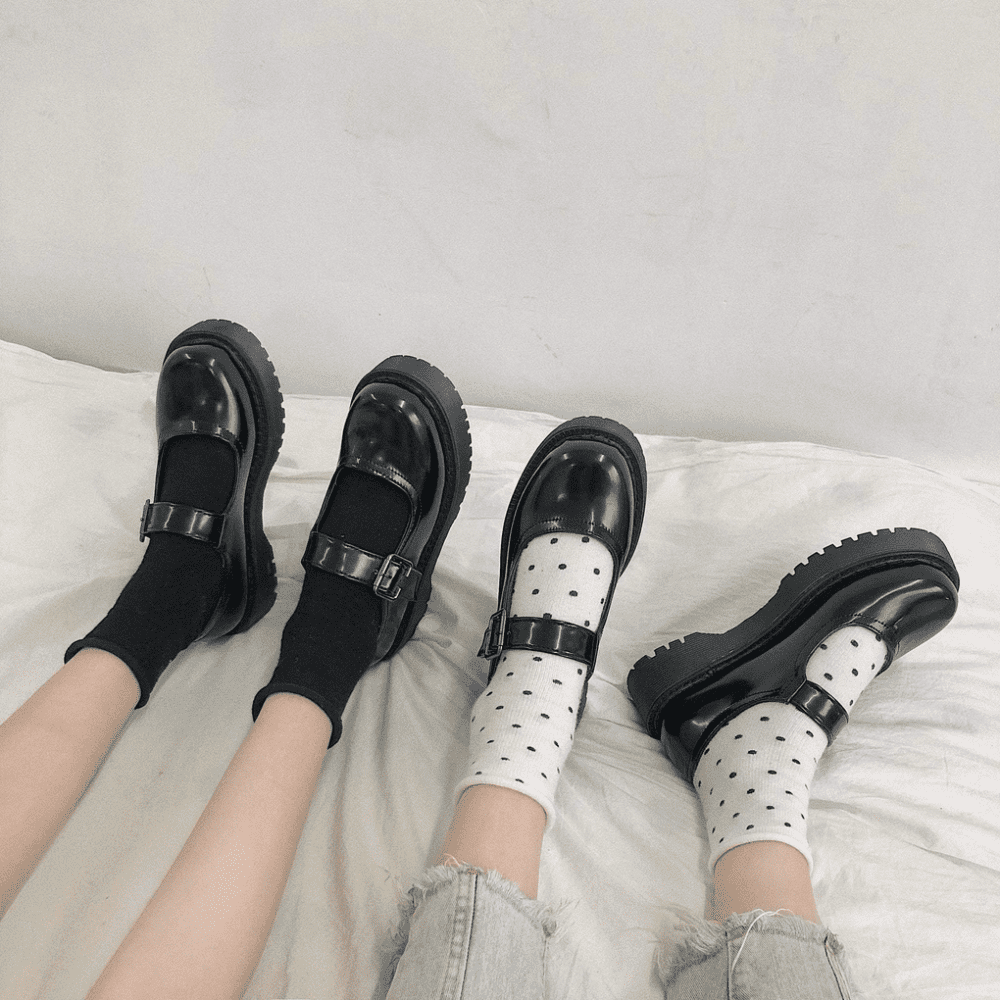
The Mary Jane is one of the classic types of shoes for women. Mary Janes are closed, leather shoes with a thin strap and buckle across the foot. The toe box is round, and Mary Janes usually have low heels. Girls often pair their Mary Janes with white socks. Wearing these with a blouse and skirt is a popular “school girl” outfit.
Many variations of these shoes exist. An example is Mary Jane platforms, where platform soles add additional height to the wearer.
The name of these dress shoes comes from a character from the comic strip, “Buster Brown.” Other names for Mary Janes include “bar shoes” and “doll shoes.”
28. Moccasin
Moccasins are also slip-on shoes. To make things easier, think of moccasins as the formal versions of loafers. These dress shoes, however, do not have heels. They also have decorative strings or tassels on their upper. Moccasins come in different colors and materials. You can choose from styles like blue suede or brown leather.
However, even if moccasins are more formal, they aren’t ideal for black-tie events. As slip-ons, they don’t require socks. Reserve moccasins for trips to the beach or club.
29. Monk Shoes
Most types of shoes have shoelaces to secure them. Monk shoes, on the other hand, have one or more straps buckled to the upper. Shoemakers often add decorative holes on their upper, much like brogues. Last, the toe box is usually pointed and capped.
It is more formal than moccasins, so you can opt to wear them to certain events. Just be sure to choose the right kind of monk shoes. Some come in suede, while others favor the clean leather look.
30. Oxfords
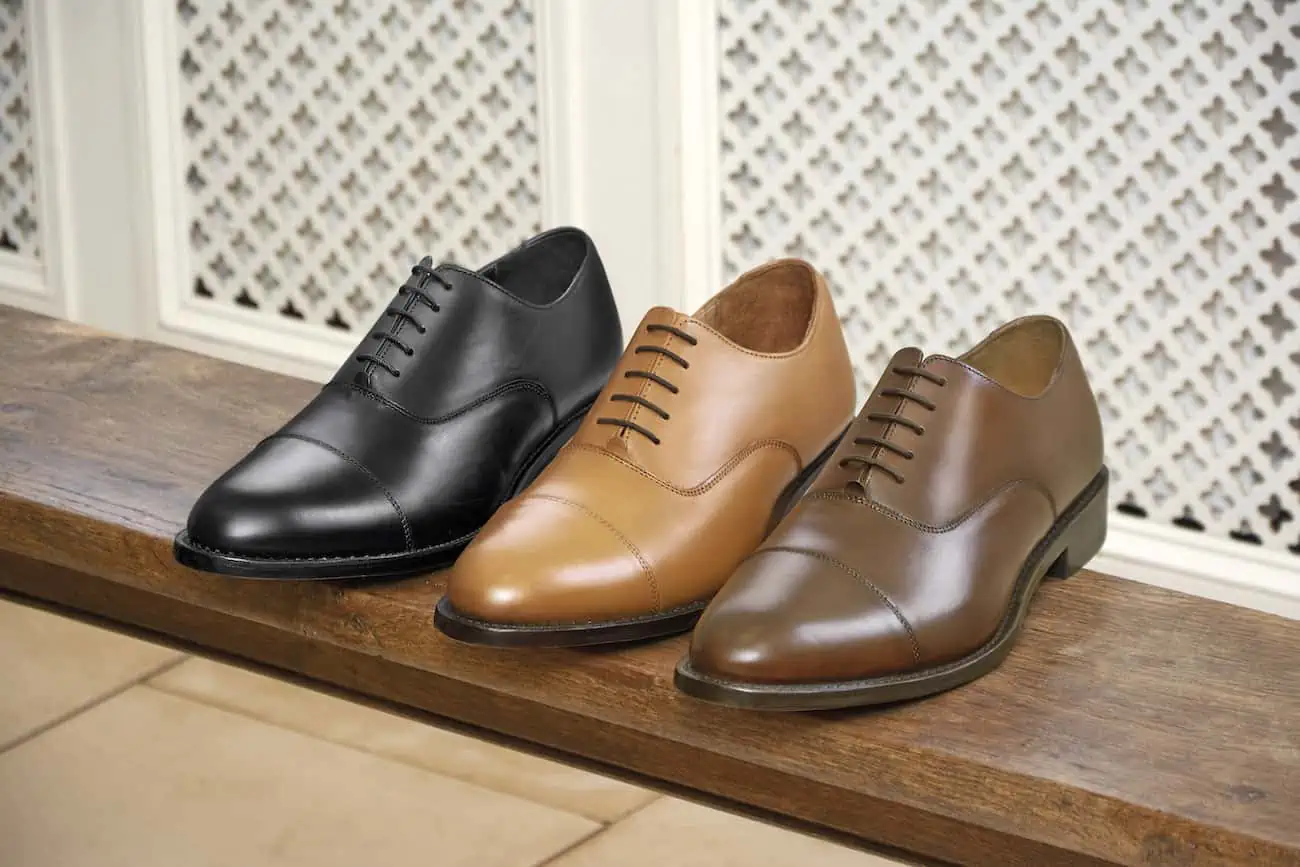
Out of the types of shoes so far, oxfords are the most formal. They are also the most popular dress shoes for men. Oxfords have a closed lacing style. The upper is made from one cut of leather. Because of these factors, oxfords can constrict movement. Of course, that doesn’t matter much when men often wear oxfords to formal events. These days, however, people like to wear oxfords to the office.
In the UK, they call Oxfords “Balmoral.”
Types of Heels
Now, heels can fall into both casual wear and formal wear. It mostly depends on the design and the height of the heels. Most offices require female employees to wear heels that are at least 3 inches tall. There are, of course, heels that are shorter and taller.
31. Block Heels
Block heels are one of the most comfortable heels to wear. They have wide bases. This helps you keep your balance better. It is also less taxing on your foot. Thus, you can wear them for much longer than other types of heels.
Block heels can be open-toed or closed. Often, they also have ankle straps. This provides more support. These are popular footwear for the office, events, and even the club. If you want to spice up your t-shirt and jeans combo, you can also opt for block heels!
32. Cone Heels
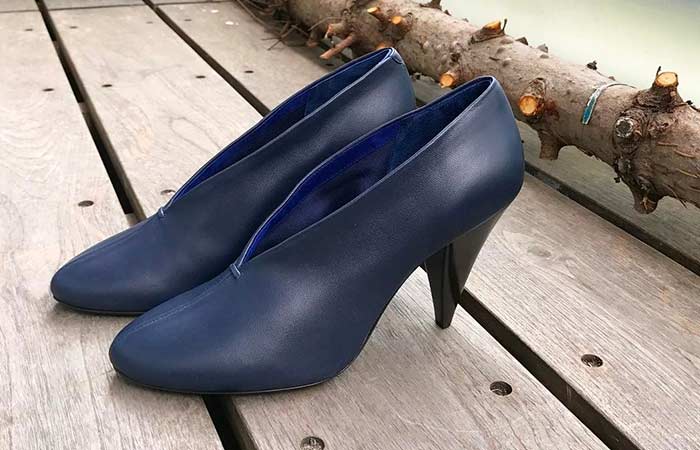
Some types of shoes differ because of their heel shape. Cone heels have distinctly shaped heels. The heel starts off wide until it points out to a round, wide tip. They are less chunky than block heels. Cone heels also offer more support than pumps or stilettos. They are a great in-between for those who want to up their style but want to stay comfortable.
33. Kitten Heels
Kitten heels are types of shoes with short, thin heels. The bottom of the shoe curves into the heel, which is usually an inch tall. Kitten heels can be open-toed or closed. Some also have ankle straps or simply leave the ankles bare.
Usually, teenagers wear kitten heels. This is because taller heels can get uncomfortable for them. Thus, a lot of kitten heels feature cute colors and designs. Kitten heels are also popular with older women. Audrey Hepburn favored kitten heels, and Michelle Obama and Hillary Clinton also brought back their popularity.
34. Platforms
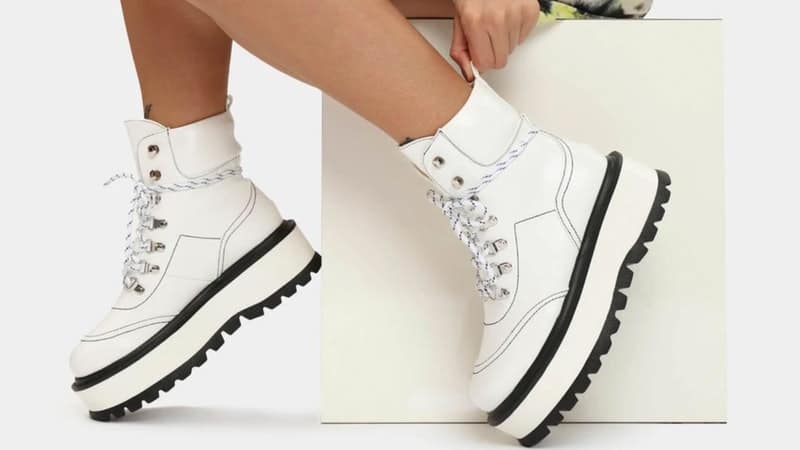
If you’re looking to add a few inches to your height, then platforms are the way to go. These types of shoes have thick soles that can go past 4 inches tall. The entire sole is elevated, so there is less strain on your foot. You can expect, however, that they are often heavy.
Platforms have different styles. Some combine platforms with stiletto heels. Some also rock platform sneakers.
35. Pump Heels
Pump heels are close-toed. They have thin heels that are taller than kitten heels but shorter than stilettos. Unlike other types of shoes, pump heels don’t have straps or buckles. You can easily slip them on and off.
Pump heels are popular footwear for clubs and parties. However, they are also great for formal or everyday wear. Classic black pumps go great with any look!
36. Stilettos

Among other types of shoes, many know the stilettos to be one of the most uncomfortable. Stilettos have the tallest and thinnest heels. The name comes from the stiletto dagger, which is a knife with a needle-like blade.
There are different shoe styles of stilettos. Some come in boots, while some combine platform shoes with stiletto heels. You’ll find stilettos on catwalks, but some also like to wear them out. They aren’t comfortable enough for everyday wear, but some like the challenge!
37. Wedges
Wedges are types of shoes where the back of the shoes act as both the sole and the heel. They often have flat soles in front, which are lower than their elevated back. It is a step up in comfort from block heels since it gives a greater surface area to balance on. Often, the insoles are also padded to maximize comfort.
Some wedges are open-toed or closed. They also come in styles like leather or canvas. Other names for wedges include “wedge boots,” “wedgies,” and “lifties.”
Types of Boots
Finally, the last types of shoes are boots. Boots usually cover the foot and ankle, sometimes even higher. They offer a lot of protection. Depending on the style, they can offer a lot of flair too!
38. Ankle Boots
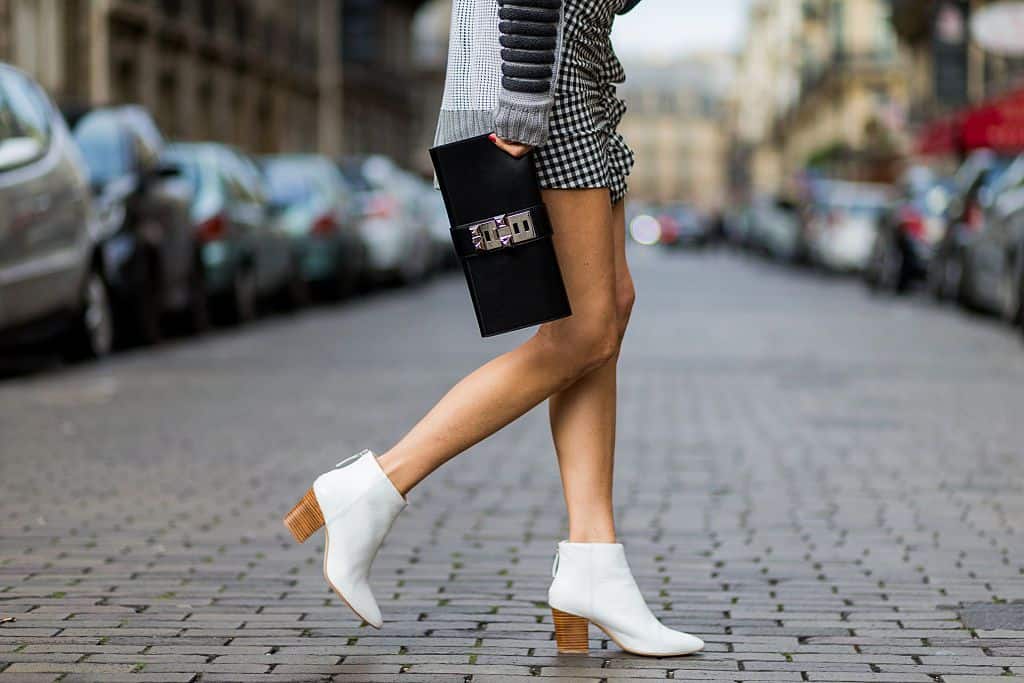
Ankle boots are one of the most favored types of shoes. This is because you can hardly go wrong with these comfortable and versatile boots. What defines ankle boots is the height of their upper. It ends around your ankle. This provides great protection and support.
Aside from that, the styles vary. Some ankle boots have heels, and some also have laces. Some have thick rubber soles, while some have thin ones. You can also choose among leather, suede, or canvas materials.
39. Calf Boots
Among the popular types of shoes are calf boots. Calf boots are any boots that end above your ankle but below your knee. It might sound stuffy to have leather cover your calves, but there are many styles to choose from. You can find calf boots that end mid-calf. Plus, some calf boots have fur lining inside to keep you warm. Some also have laces that add a punk feel to your look.
The popular Uggs are examples of calf boots.
40. Chelsea Boots
When talking about staples among the types of shoes, many vote for Chelsea boots. Both men and women favor Chelsea boots. These boots are close-fitting ankle boots. They have an elastic side panel and a loop of fabric on the back that make it easier to slip them on.
Chelsea boots are iconic, and they are easy to pair with both casual and semi-formal wear. Most boots come in black leather, but brown suede is also popular. The Beatles often wore Chelsea boots, which added to the shoes’ popularity.
41. Cowboy Boots
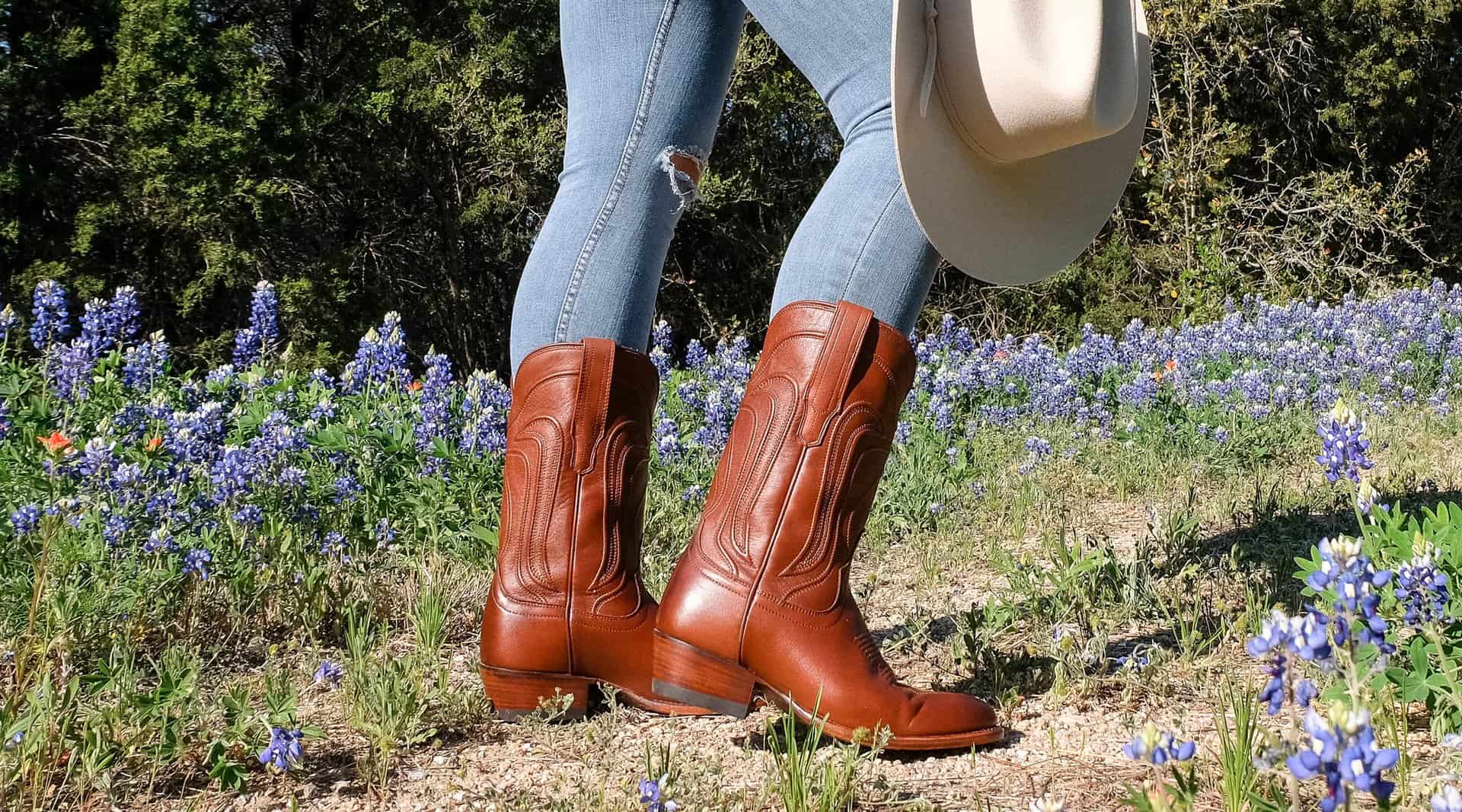
It is easy to spot cowboy boots, even from afar. Cowboy boots have high heels and end at mid-calf. They have a distinctly pointed toe box. Usually, shoemakers use cowhide leather for the upper. They often decorate them with intricate patterns.
Historically, cowboys wore these boots when horse riding. The leather protects their ankles and calves from chafing against the saddle. Today, many wear cowboy boots for fashion. It certainly is a statement. If you want to stand out with your plain denim, consider wearing cowboy boots!
42. Military Boots
Military boots were originally for soldiers to wear on duty and in combat training. However, fashion takes inspiration from everywhere, so military boots also became popular shoes. Military boots are black, lace-up boots that usually end above the ankle. Standard military boots are thick and hard. However, there are styles that use softer leather to ease movement.
Some also call military boots “combat boots.”
43. Steel-toe Boots
Out of the other types of shoes, steel-toe boots take function over fashion seriously. Construction and factory workers are those who wear these boots. Where they work, hazardous objects can fall on their feet. Thus, shoemakers use steel, hard plastic, or aluminum for the boots. The toe box is also made of steel. This offers as much protection as possible.
Other names for steel-toe boots include “safety boots” and “steel toecaps.”
44. Timberland Boots
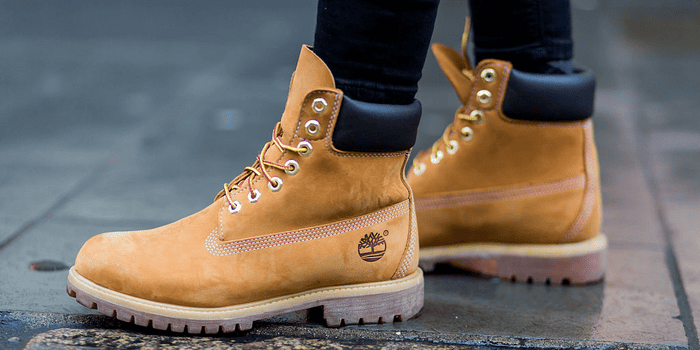
The list of types of shoes goes on with Timberland boots. People often refer to these boots as “Timbs.” Like Chuck Taylors, the name of these boots comes from its designer. The company, Timberland, released these boots in 1973. Since then, Timberlands have risen in popularity.
The yellow leather paired with the black cut padding looks good with any outfit. Plus, they are also great for walks and hiking. These lace-up boots also come in other colors like black, brown, and green.
45. Wellington Boots
Lastly, Wellington boots are waterproof footwear. They may look like your standard rain boots. However, they originate from a military riding boot from Germany. In the early 19th century, it was a staple for aristocrats.
Today, those who often wear Wellington boots are from industrial settings. This includes workers in chemical plants, farms, and mines.
Was this page helpful?
Our commitment to delivering trustworthy and engaging content is at the heart of what we do. Each fact on our site is contributed by real users like you, bringing a wealth of diverse insights and information. To ensure the highest standards of accuracy and reliability, our dedicated editors meticulously review each submission. This process guarantees that the facts we share are not only fascinating but also credible. Trust in our commitment to quality and authenticity as you explore and learn with us.


